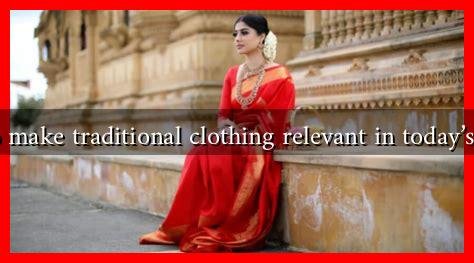-
Table of Contents
- How to Make Traditional Clothing Relevant in Today’s World
- The Importance of Traditional Clothing
- Strategies to Revive Traditional Clothing
- 1. Modern Design Adaptations
- 2. Collaborations with Contemporary Designers
- 3. Digital Marketing and Social Media
- 4. Education and Awareness
- Case Studies: Successful Revivals
- Conclusion
How to Make Traditional Clothing Relevant in Today’s World
In an era dominated by fast fashion and globalized clothing trends, traditional clothing often finds itself overshadowed. However, there is a growing movement to revive and adapt traditional garments, making them relevant in contemporary society. This article explores various strategies to integrate traditional clothing into modern wardrobes while preserving cultural heritage.
The Importance of Traditional Clothing
Traditional clothing serves as a vital link to cultural identity and history. It reflects the values, beliefs, and artistry of a community. As globalization continues to homogenize fashion, the need to celebrate and preserve these unique garments becomes increasingly important. Here are some reasons why traditional clothing matters:
- Cultural Identity: Traditional garments are a source of pride and identity for many communities.
- Artistic Expression: They showcase unique craftsmanship and artistic techniques passed down through generations.
- Environmental Sustainability: Traditional clothing often utilizes local materials and sustainable practices, contrasting sharply with fast fashion’s environmental impact.
Strategies to Revive Traditional Clothing
To make traditional clothing relevant today, several strategies can be employed. These approaches not only promote cultural heritage but also appeal to modern consumers.
1. Modern Design Adaptations
One effective way to make traditional clothing appealing is through modern design adaptations. Designers can take inspiration from traditional garments and incorporate contemporary elements. For example:
- Fabric Choices: Using modern, breathable fabrics can enhance comfort while retaining traditional patterns.
- Silhouette Updates: Adapting the silhouette to fit current fashion trends can attract younger audiences.
- Functional Features: Adding pockets or adjustable elements can make traditional clothing more practical for everyday wear.
2. Collaborations with Contemporary Designers
Collaborations between traditional artisans and contemporary fashion designers can yield innovative results. For instance, the partnership between Indian artisans and Western designers has led to the creation of unique fusion wear that respects traditional craftsmanship while appealing to global markets. Such collaborations can:
- Introduce traditional techniques to a broader audience.
- Provide artisans with fair compensation and exposure.
- Encourage the preservation of traditional skills.
3. Digital Marketing and Social Media
In today’s digital age, social media plays a crucial role in promoting traditional clothing. Platforms like Instagram and TikTok allow designers and artisans to showcase their work to a global audience. Effective strategies include:
- Storytelling: Sharing the history and significance of traditional garments can create emotional connections with consumers.
- Influencer Collaborations: Partnering with influencers who appreciate cultural heritage can help reach a wider audience.
- Online Marketplaces: Utilizing platforms like Etsy or specialized websites can help artisans sell their products directly to consumers.
4. Education and Awareness
Raising awareness about the cultural significance of traditional clothing is essential. Educational initiatives can include:
- Workshops: Hosting workshops that teach traditional crafting techniques can engage younger generations.
- Fashion Shows: Organizing events that highlight traditional clothing can attract media attention and public interest.
- Documentaries: Producing documentaries that explore the history and relevance of traditional garments can educate and inspire.
Case Studies: Successful Revivals
Several brands and initiatives have successfully revived traditional clothing, demonstrating the potential for relevance in today’s world:
- Chulaap: This brand combines traditional Indian textiles with contemporary designs, appealing to modern consumers while supporting local artisans.
- Ode to the North: A Canadian brand that incorporates Indigenous designs into modern apparel, promoting cultural awareness and sustainability.
- Fashion Revolution: This global movement advocates for sustainable fashion, encouraging consumers to appreciate the stories behind their clothing, including traditional garments.
Conclusion
Making traditional clothing relevant in today’s world requires a multifaceted approach that embraces modernity while honoring cultural heritage. By adapting designs, fostering collaborations, leveraging digital marketing, and promoting education, we can ensure that traditional garments continue to thrive. As consumers become more conscious of their fashion choices, the revival of traditional clothing not only preserves cultural identity but also contributes to a more sustainable and diverse fashion landscape. Embracing these strategies can lead to a future where traditional clothing is celebrated and worn with pride.
For more insights on sustainable fashion and cultural preservation, visit Fashion Revolution.


